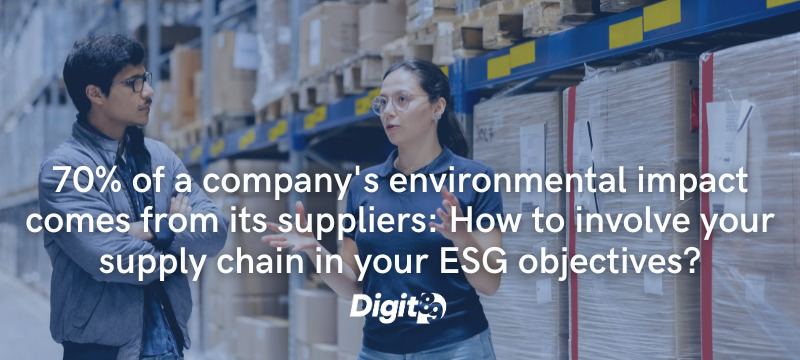In the fast-evolving landscape of Environmental, Social, and Governance (ESG) objectives, organisations are forced to face the imperative of more sustainable practices. It’s an imperative grounded not just in ethical considerations, but also in economic realities.
When 70% of a company’s environmental impact is attributed to its suppliers also known as Scope 3 emissions, these indirect impacts within the supply chain have become a critical focal point in the journey towards ESG goals.
Our latest webinar highlights this concerning issue as these emissions represent a considerable weight into the calculation of a company’s carbon footprint. To create a meaningful change, we need a united effort to embrace sustainable practices.
Why does this matter to Digit89? Our role as a transformative force within the business-supplier relationship magnifies in this context. With businesses seeking to halve their environmental footprint by 2030, the importance of Scope 3 emissions becomes vital
For this webinar, we have had the privilege of hosting Louis Collinet, CEO of Tapio, in an open and passionate discussion about the complexities posed by Scope 3 emissions.
Tapio is a company that provides climate expertise and have developed their own platform to help companies and organisations transition towards a low carbon economy.
Navigating through Carbon Footprint Calculation
At the heart of sustainable practices lies a crucial need: measuring the carbon footprint. This involves a two-fold process:
1. Activity Data: Quantifying the details of every aspect of a company’s activities. For exemple, how frequently a person commutes to the office—data that, on the surface, might not seem related to CO2 emissions but it actually is.
2. Emission Factors: Translating these activities into environmental impact necessitates the application of emission factors. These factors are vital conversion elements that translate activity data into CO2 equivalents. Emission factors can be found in publicly available databases, either for free or at a cost, and are very helpful for accurately assessing carbon footprint.
By extending this formula across all facets of the organisation, a comprehensive carbon footprint report is generated, providing valuable insights into the company’s environmental impact.
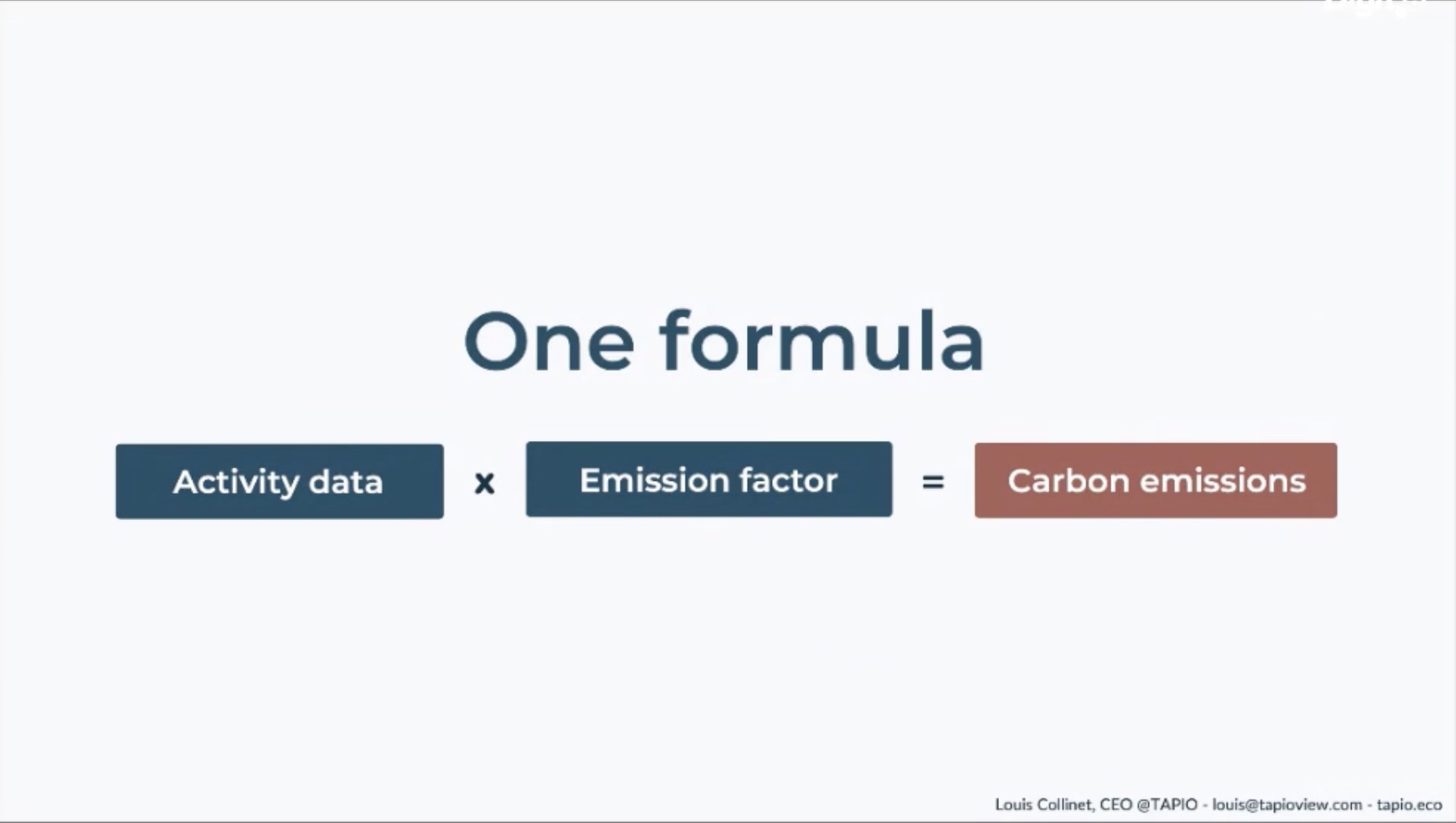 |
Scope 3 GHG – The Indirect Impact Dilemma
In order to delve further into the complexity of the Scope 3, let us quickly remind you of the different scopes that exist.
Scope 1 : It includes all direct emissions that are generated from sources that are directly owned or controlled by an organisation.
Scope 2 : It represents indirect emissions from the generation of purchased energy, from a utility provider. In other words, all GHG emissions released in the atmosphere, from the consumption of purchased electricity, steam, heat and cooling.
Scope 3 : The holy grail of emissions.
Scope 3 emissions are found in more subtle yet impactful indirect emissions that weave through a company’s value chain—activities beyond their immediate control or ownership. A defining aspect of Scope 3 emissions is their link with the supply chain. These emissions wield a huge influence, often forming the predominant share of a company’s carbon footprint—averaging a substantial 70% of its total emissions.
In essence, if a CO2 emission is integral to your business operations and doesn’t fall under Scope 1 or Scope 2 categories, then it likely belongs to Scope 3. This simplifies the complex, allowing you to recognise and address these emissions accurately.
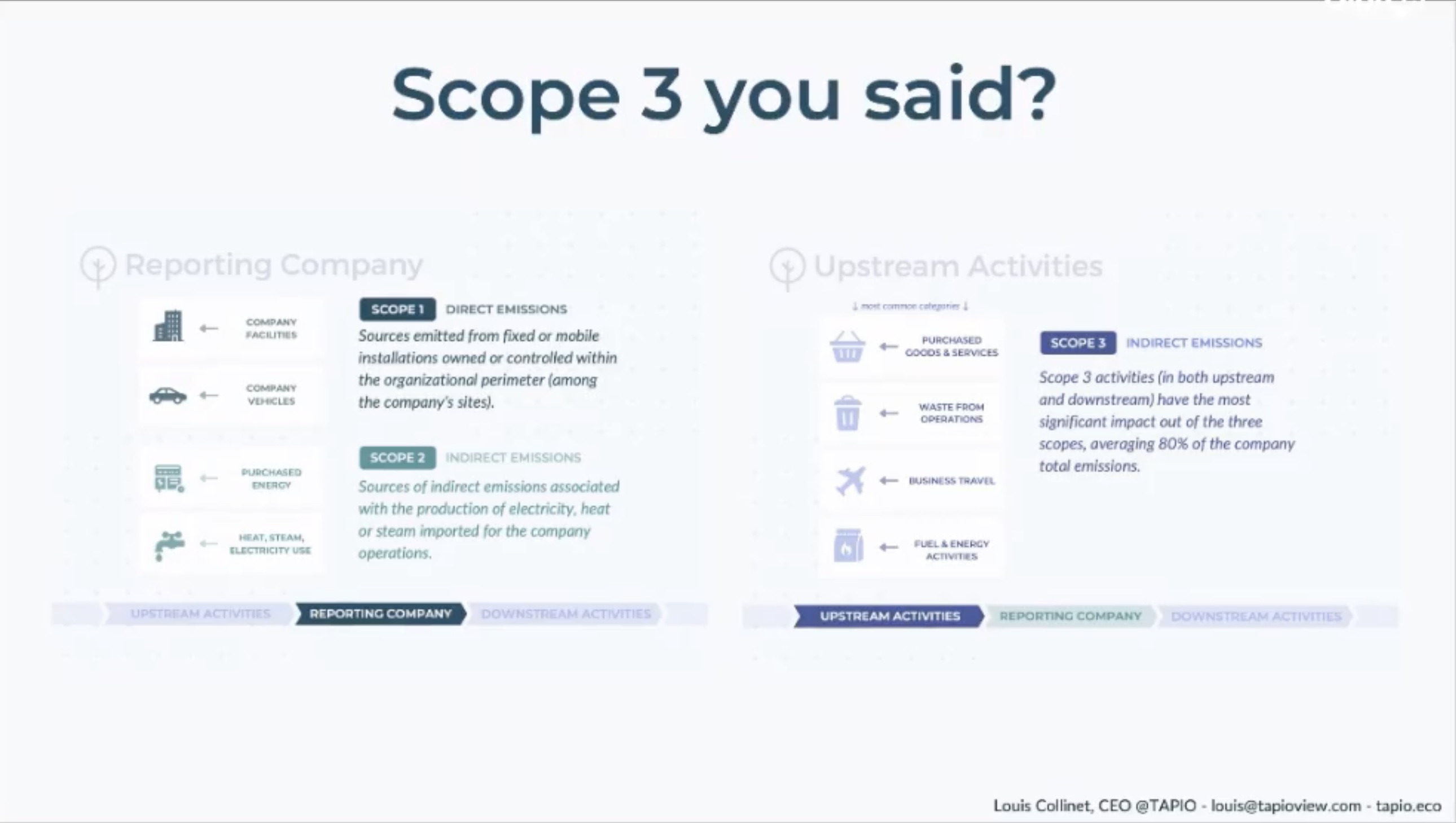 |
The Challenges of Scope 3 Emissions
One of the most challenging aspects of addressing Scope 3 emissions is their complexe nature.
These emissions, originating from the supply chain, are extremely difficult to estimate, measure, and track.
This challenge amplifies the difficulty of achieving CO2 reduction targets, particularly when about 70% of these emissions come from Scope 3 sources.
This intricate link between a company and its suppliers highlights the relevance of platforms like Tapio and Digit89.
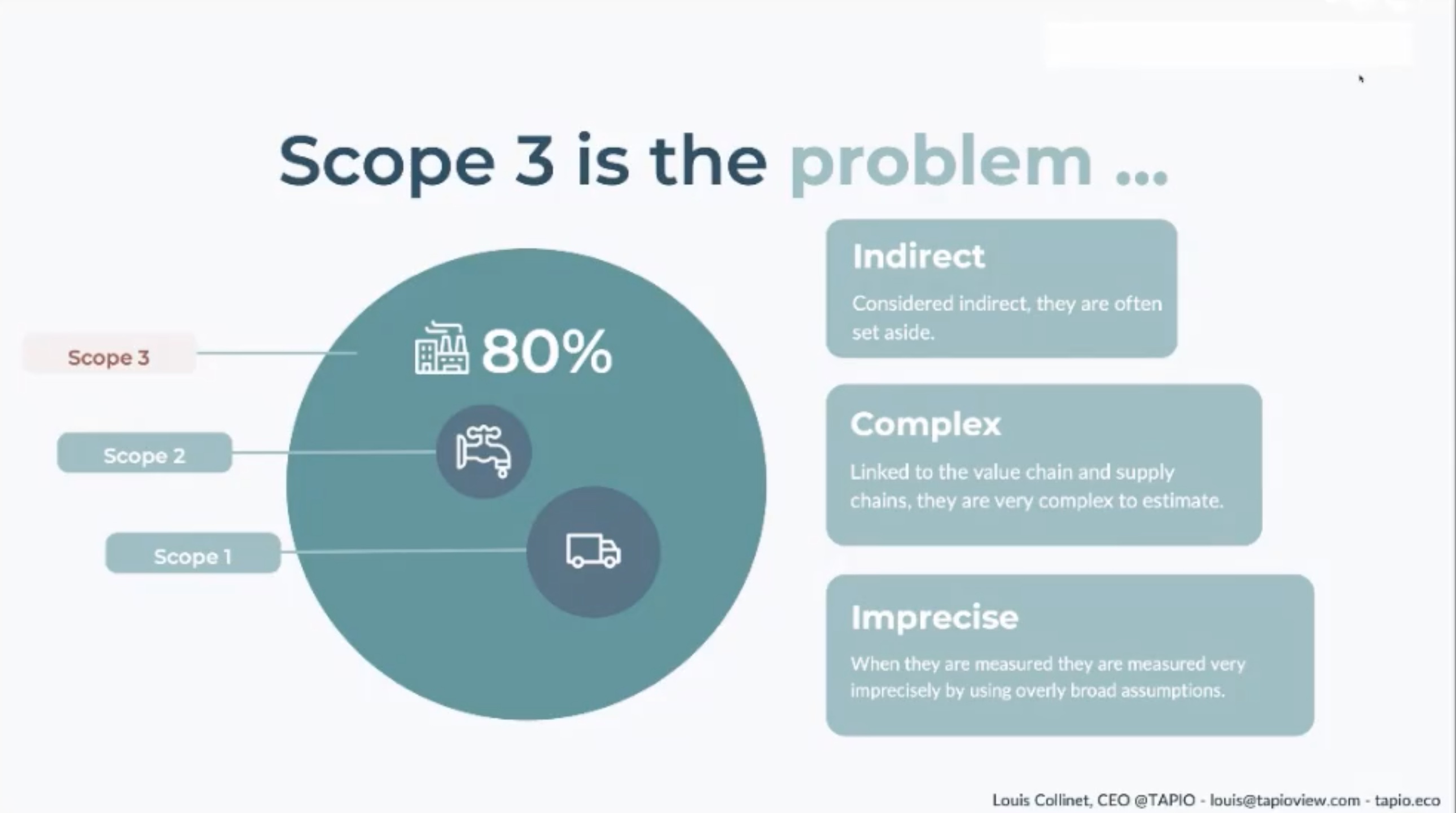 |
Solutions to Tackle the Scope 3 Challenge
Understanding:
Before embarking on any course of action, comprehension is the very first step to success. The path to reduction starts with measurement and identifying the source of CO2 emissions.
Such understanding will naturally lead you towards reduction. It’s crucial to grasp the workings of emissions to avoid futile efforts that might seem impactful but hold minimal significance in the bigger picture.
⇒ Here is a link to an article about how knowledge can hold more solution than “useless” actions : Tapio’s insights on knowledge as an incentive to climate action.
Acting:
Armed with comprehension, an actionable plan must follow.
Streamlining processes is one approach; for example, by consolidating five in-person webinars into three online sessions.
By doing less but better, the reduction in carbon footprint becomes a tangible outcome. Innovative alternatives, like replacing daily commutes with more sustainable modes of transportation is also an exemple of showing up for change.
Engaging:
Engaging the community and stakeholders is vital.
Collaborating hand in hand with the ecosystem, particularly suppliers, is crucial. As each supplier’s actions hold a big influence in CO2 emissions, alignment becomes a priority. Communicating the commitment to sustainability and applying a more manageable deadline will make sustainable practices more accessible.
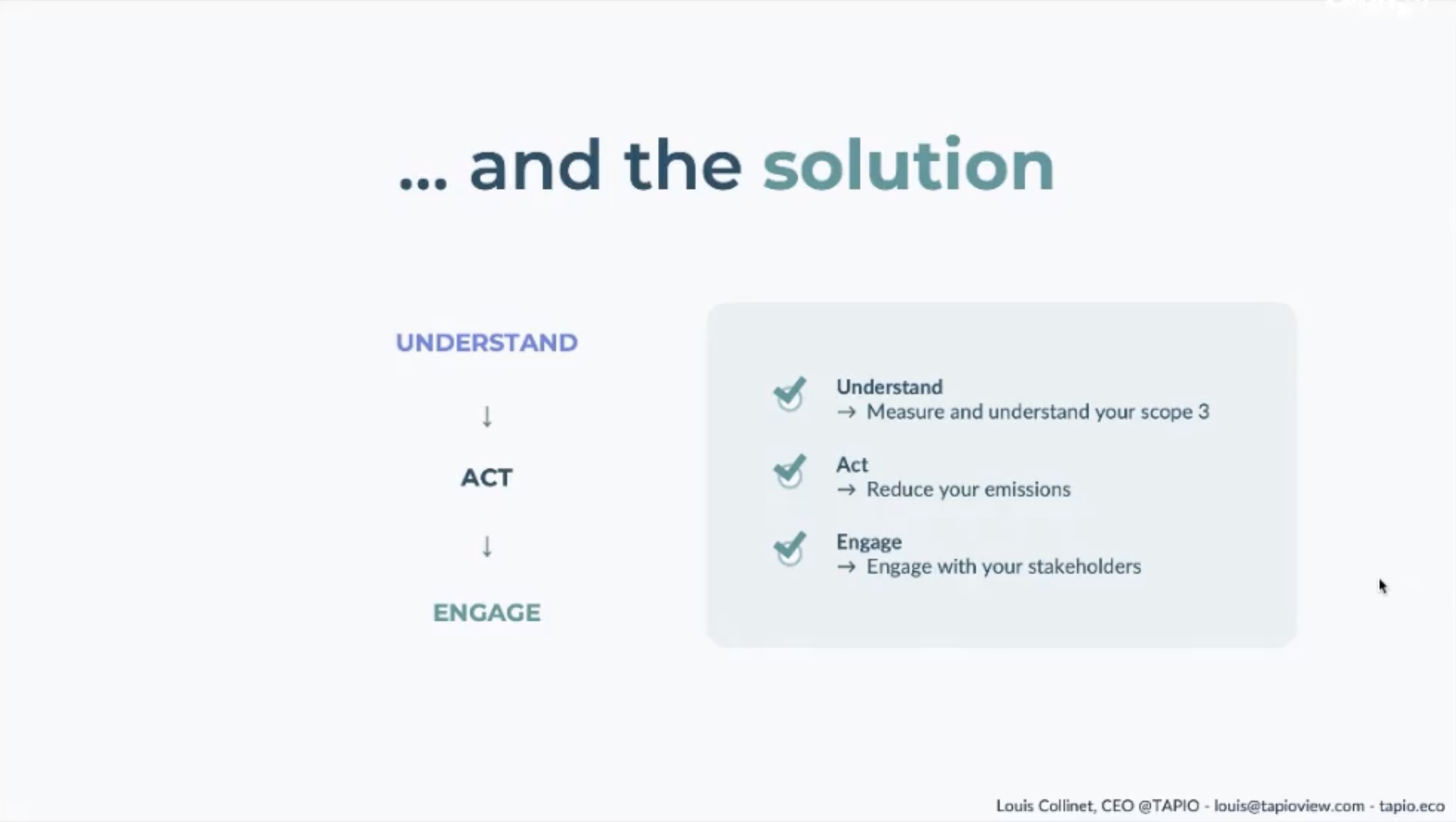 |
Leverage:
At Digit89, we have leveraged our platform and our relationship with the company’s suppliers to establish a mechanism aimed at incentivizing and encouraging suppliers to enhance their environmental impact and thereby become more aligned with the company’s ESG objectives.
Suppliers who make use of our services can take advantage of a more favorable financing rate for their invoices if they have a good ESG score.
Indeed, suppliers have the option to assess their ESG score on our platform, and the better their score, the lower the cost of our service will be. This creates a financial incentive for them to improve their situation.
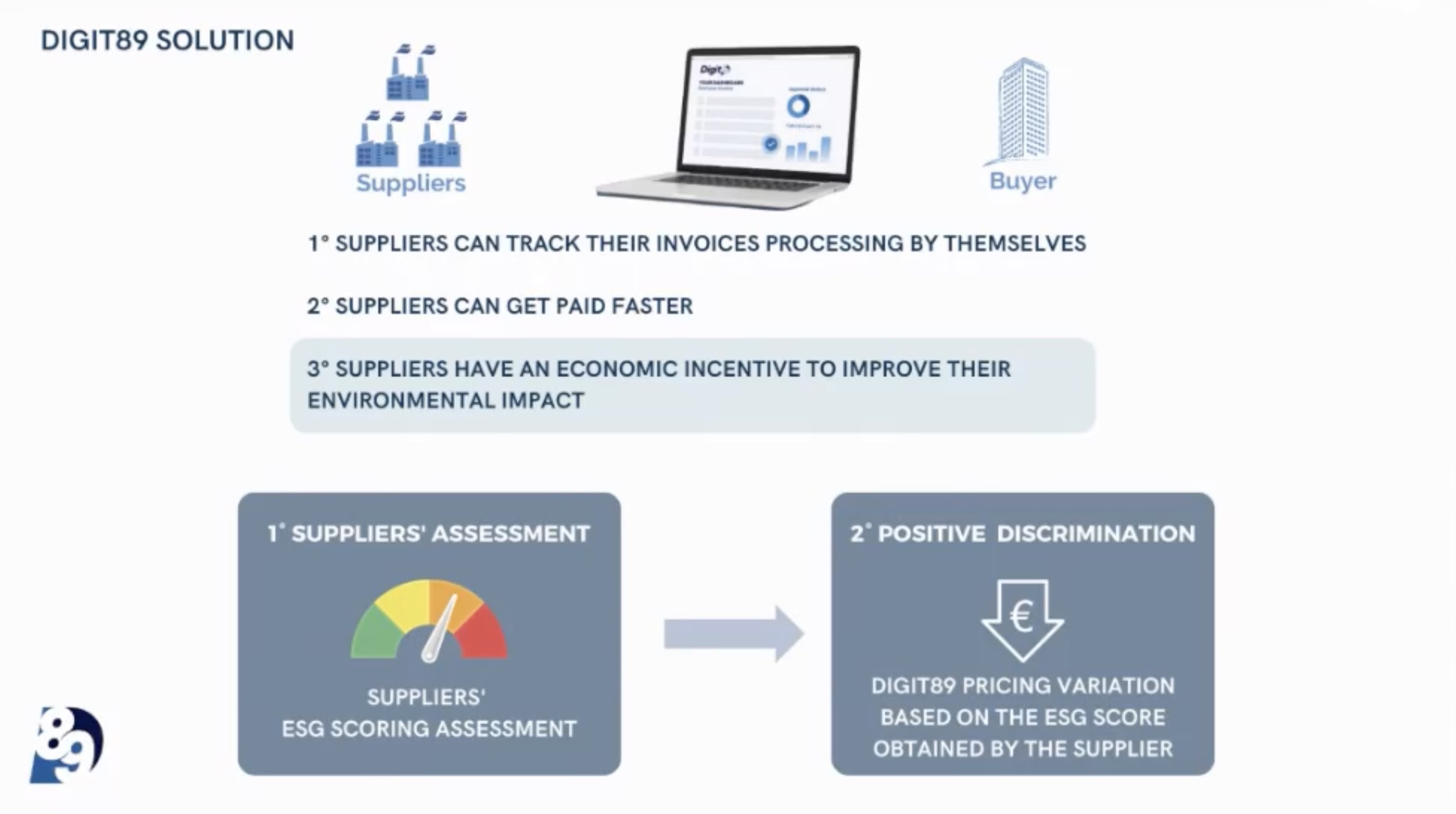 |
At Tapio, they introduce a maturity evaluation tool. Through a concise questionnaire, businesses can gauge suppliers’ CO2 intensity levels. This approach doesn’t merely measure carbon footprints but focuses on understanding and maturity within the CO2 impact ecosystem.
Navigating a Greener Future Together
The path to ESG excellence is paved with challenges, but it is also filled with opportunities.
By involving your supply chain, understanding the complexities of Scope 3 emissions, and embracing solutions we talked about, companies can significantly reduce their environmental impact.
Remember, the quest for sustainability is a collaborative one, a journey that encourages teamwork and embraces shared responsibility. As we navigate through the complexities of Scope 3 emissions, let us together stride towards a greener, more sustainable future.
